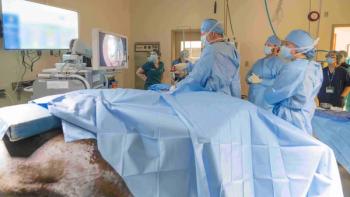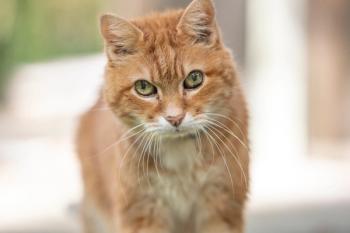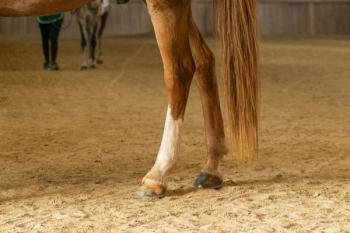
Anatomy of veterinary equine laminitis
An overview of how this debilitating equine condition affects the foot.
Getty Images/Sacha Bloor
The equine foot is comprised of specialized anatomical and biomechanical elements that allow for absorption and transmission of great weight-bearing forces as the horse ambulates.
The coffin bone (distal phalanx, P3) is suspended in the hoof by a suspensory apparatus, the lamellae attaching to the inner hoof wall, with the deep digital flexor tendon (DDFT) taking up tension from the ventral aspect of the coffin bone. The lamellae are villi-like structures that functionally attach the hoof capsule to the third phalanx (P3). There are about 550 to 600 primary sensitive, or dermal, lamellae originating from the laminar corium, which is contiguous with the periosteum covering the parietal surface of P3. These interdigitate with the insensitive (epidermal), or horny, lamellae of the stratum internum, the deepest layer of the hoof wall. Each of these primary laminae contains about 150 to 200 secondary lamellae, increasing the functional surface area and overall strength of the laminar junction.
The coffin bone acts as a shock absorber and transfers the weight-bearing forces from the hoof wall to the lamellae up to leg's skeletal system. The hoof wall itself also provides shock absorption based on the arrangement of tubules. The tubules are denser on the outside of the hoof and are less dense toward P3. The digital cushion and frog help to attenuate the loads experienced by the hoof. The digital cushion is a mass of flexible material that contributes to the formation of the heels. This structure is one of the primary shock absorbers of the foot. The frog, composed of highly elastic tissue, sits exterior to the digital cushion and is the part of the foot that makes contact with the ground first. At a canter, the frog contacts the ground, assisting in load dissipation. The wedge shape of the frog allows loads to be transferred to the bars and caudal hoof wall. This is then transmitted to the sole and digital cushion.
When the foot is placed on the ground, blood is forced from the foot to the leg by the increase in pressure and by the change in shape of the digital cushion and the frog. The pressure and the change in shape compress the veins in the foot. When the foot is lifted, the compression is relieved and blood flows into the veins again. In this way, the movement of these structures in the hoof acts as a pump.
These specialized elements of the equine foot can also be responsible for or victims of serious pathology, such as in the case of laminitis. Lane A. Wallett, DVM, of the University of Florida's College of Veterinary Medicine recently examined paleontological research collections of equine distal phalanges and found evidence of chronic laminitis in 75 percent of specimens. The specimens ranged from 11,000 to 3.5 million years old.
Dr. Sallie S. Hyman is an equine veterinarian and a veterinary writer in Purcellville, Virginia.
Newsletter
From exam room tips to practice management insights, get trusted veterinary news delivered straight to your inbox—subscribe to dvm360.




